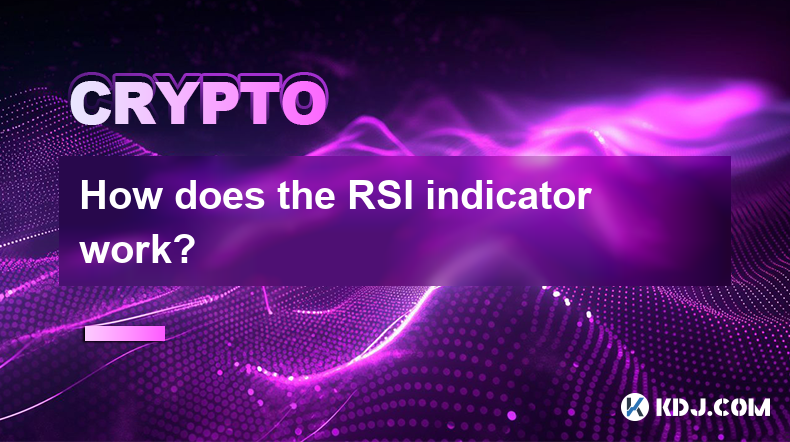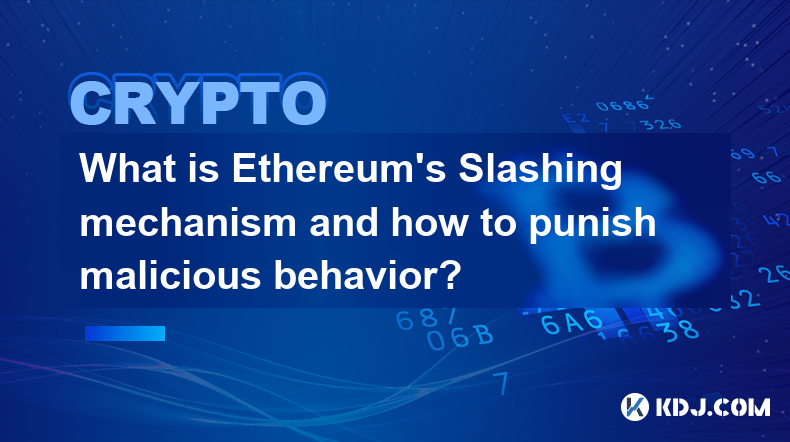-
 Bitcoin
Bitcoin $78,311.0860
-4.96% -
 Ethereum
Ethereum $1,554.1389
-11.52% -
 Tether USDt
Tether USDt $0.9994
-0.01% -
 XRP
XRP $1.8690
-9.69% -
 BNB
BNB $553.2270
-4.73% -
 USDC
USDC $0.9999
0.00% -
 Solana
Solana $106.1287
-7.45% -
 Dogecoin
Dogecoin $0.1469
-8.94% -
 TRON
TRON $0.2271
-5.15% -
 Cardano
Cardano $0.5723
-8.25% -
 UNUS SED LEO
UNUS SED LEO $8.9644
-0.63% -
 Toncoin
Toncoin $3.0468
-7.40% -
 Chainlink
Chainlink $11.2739
-7.40% -
 Stellar
Stellar $0.2297
-7.44% -
 Avalanche
Avalanche $16.2885
-4.13% -
 Shiba Inu
Shiba Inu $0.0...01126
-4.87% -
 Sui
Sui $1.9914
-4.47% -
 Hedera
Hedera $0.1438
-6.57% -
 MANTRA
MANTRA $6.2867
1.46% -
 Polkadot
Polkadot $3.5764
-7.71% -
 Bitcoin Cash
Bitcoin Cash $272.7745
-6.40% -
 Dai
Dai $0.9998
-0.02% -
 Litecoin
Litecoin $70.1706
-10.92% -
 Ethena USDe
Ethena USDe $0.9986
-0.04% -
 Bitget Token
Bitget Token $4.0702
-6.45% -
 Pi
Pi $0.5891
-5.30% -
 Hyperliquid
Hyperliquid $10.8343
-2.83% -
 Monero
Monero $195.2009
-7.56% -
 Uniswap
Uniswap $5.1005
-8.71% -
 OKB
OKB $50.7194
-5.53%
How does the RSI indicator work?
The Relative Strength Index (RSI) is a momentum oscillator utilized in technical trading to discern overbought or oversold conditions, providing insights into potential price corrections or rallies.
Feb 07, 2025 at 01:24 pm

Key Points:
- RSI measures momentum and identifies overbought and oversold conditions
- Ranges from 0 to 100
- Extremes and divergences provide trading signals
How the RSI Indicator Works
The Relative Strength Index (RSI) is a momentum oscillator that measures the magnitude of recent price changes to evaluate overbought or oversold conditions in a security's price. It was developed by J. Welles Wilder and introduced in his 1978 book, "New Concepts in Technical Trading Systems."
Calculation:
The RSI is calculated using two key values: the average gain and the average loss.
- Average Gain (AvgGain): This measures the average of all upward price changes over a specific period, typically 14 days (14-period RSI).
- Average Loss (AvgLoss): This measures the average of all downward price changes over the same period.
Formula:
The RSI formula uses the following equation:
RSI = 100 - (100 / (1 + (AvgGain / AvgLoss)))Interpretation:
- Overbought and Oversold: As the RSI rises above 70, it indicates that the security is approaching an overbought condition, suggesting a potential price correction. Conversely, when the RSI drops below 30, it indicates an oversold condition, suggesting a possible price rally.
- Trends and Momentum: The RSI can also be used to identify bullish and bearish trends. Rising RSI values indicate upward momentum, while falling RSI values suggest downward momentum. Additionally, the slope of the RSI can provide insights into trend strength.
- Divergences: Divergences occur when the price of a security moves in the opposite direction of the RSI. Positive divergence (when the price rises while the RSI falls) can signal bullish momentum, while negative divergence (when the price falls while the RSI rises) suggests bearish momentum.
FAQs:
Q: What is the optimal RSI period?
A: The standard period for the RSI is 14, but traders can adjust this based on the volatility and time horizon of the instrument. Longer periods provide smoother and more reliable signals, while shorter periods are more reactive to price changes.
Q: How do you use the RSI to trade?
A: Traders can use RSI signals to enter or exit positions. Potential trades include entering long positions when the RSI crosses above 30 and exiting when it rises above 70, or entering short positions when the RSI crosses below 70 and covering when it drops below 30. However, it's crucial to use the RSI in conjunction with other technical indicators to confirm signals.
Q: Are there any limitations to the RSI?
A: The RSI can be less reliable in flat or sideways markets, where the price range is relatively narrow. Additionally, the RSI is a lagging indicator, which means it responds to price changes after the fact and may not provide accurate signals in fast-moving markets.
Disclaimer:info@kdj.com
The information provided is not trading advice. kdj.com does not assume any responsibility for any investments made based on the information provided in this article. Cryptocurrencies are highly volatile and it is highly recommended that you invest with caution after thorough research!
If you believe that the content used on this website infringes your copyright, please contact us immediately (info@kdj.com) and we will delete it promptly.
- Gold prices climb close to their all-time high levels as US President Trump's April 2-bound auto tariffs heightened global trade tensions.
- 2025-04-07 22:35:12
- BlockDAG (BDAG) Discussions Are Shifting Away from Charts and Moving Toward Results
- 2025-04-07 22:35:12
- Peter Brandt Predicts a 43% Drop for XRP if the Coin Fails to Stay Above $1.9
- 2025-04-07 22:30:12
- The Crypto Market is Entering a Delicate Phase, But The Last Dwarfs ($TLD) Presale Promises Huge Upside
- 2025-04-07 22:30:12
- Bitcoin, Ethereum, XRP, Solana, DOGE Price Plunge as US President Donald Trump's Global Tariff War Hits Cryptocurrencies
- 2025-04-07 22:25:12
- The leading cryptocurrency projects measured by Total Value Locked (TVL) growth during the week indicate an uptrend.
- 2025-04-07 22:25:12
Related knowledge

What is Ethereum’s Slashing mechanism and how to punish malicious behavior?
Feb 20,2025 at 03:08am
Key PointsOverview of slashingDifferent types of slashing in EthereumIncentives and consequences of slashingIdentifying and reporting slashed validatorsOngoing discussions and potential improvementsEthereum's Slashing Mechanism: Punishing Malicious BehaviorEthereum's slashing mechanism is an essential tool for ensuring network security and punishing mal...

What is the verifier node of Ethereum and how to become a verifier?
Feb 19,2025 at 06:00pm
The Verifier Node of Ethereum: A Comprehensive GuideKey Points:What is a Verifier Node?How to Become a Verifier NodeResponsibilities and Rewards of a Verifier NodeMinimum Requirements for Becoming a Verifier NodePotential Difficulties in Running a Verifier Node1. What is a Verifier Node?A Verifier Node is an independent entity on the Ethereum network th...

What is Ethereum’s staking, and how to participate and earn money?
Feb 19,2025 at 04:37pm
Key Points:Understanding Ethereum's Staking MechanismSteps to Participate in StakingBenefits and Rewards of StakingSecurity and Risk ConsiderationsTechnical Requirements and Hardware OptionsPotential Challenges and Troubleshooting TipsFAQs on Ethereum StakingWhat is Ethereum's Staking?Proof-of-Stake (PoS) is a consensus mechanism used in blockchain netw...

What is Ethereum’s DAO (Decentralized Autonomous Organization) and how does it work?
Feb 20,2025 at 03:12am
Key PointsDefinition and Structure of a DAOGovernance and Decision-Making in DAOsBenefits and Use Cases of DAOsChallenges and Limitations of DAOsWhat is Ethereum's DAO (Decentralized Autonomous Organization) and How Does It Work?Definition and Structure of a DAOA Decentralized Autonomous Organization (DAO) is an innovative governance and management fram...

What is Ethereum's multi-signature wallet and how to improve security?
Feb 20,2025 at 02:18pm
Key Points:Understanding the Concept of a Multi-Signature WalletBenefits and Drawbacks of Multisig WalletsRequirements for Setting Up a Multisig WalletStep-by-Step Guide to Generating a Multisig WalletImplementing Strategies for Enhanced Security1. Understanding the Concept of a Multi-Signature WalletA multi-signature (multisig) wallet in the Ethereum e...

What is Ethereum's oracle and how to provide data for smart contracts?
Feb 21,2025 at 01:30am
Key Points:Understanding the concept of oracles in EthereumExploring different types of oraclesDetailed guide on how to provide data for smart contractsAddressing potential challenges and considerationsWhat is Ethereum's Oracle?Oracles are crucial components in the Ethereum ecosystem, enabling smart contracts to access real-world data and off-chain even...

What is Ethereum’s Slashing mechanism and how to punish malicious behavior?
Feb 20,2025 at 03:08am
Key PointsOverview of slashingDifferent types of slashing in EthereumIncentives and consequences of slashingIdentifying and reporting slashed validatorsOngoing discussions and potential improvementsEthereum's Slashing Mechanism: Punishing Malicious BehaviorEthereum's slashing mechanism is an essential tool for ensuring network security and punishing mal...

What is the verifier node of Ethereum and how to become a verifier?
Feb 19,2025 at 06:00pm
The Verifier Node of Ethereum: A Comprehensive GuideKey Points:What is a Verifier Node?How to Become a Verifier NodeResponsibilities and Rewards of a Verifier NodeMinimum Requirements for Becoming a Verifier NodePotential Difficulties in Running a Verifier Node1. What is a Verifier Node?A Verifier Node is an independent entity on the Ethereum network th...

What is Ethereum’s staking, and how to participate and earn money?
Feb 19,2025 at 04:37pm
Key Points:Understanding Ethereum's Staking MechanismSteps to Participate in StakingBenefits and Rewards of StakingSecurity and Risk ConsiderationsTechnical Requirements and Hardware OptionsPotential Challenges and Troubleshooting TipsFAQs on Ethereum StakingWhat is Ethereum's Staking?Proof-of-Stake (PoS) is a consensus mechanism used in blockchain netw...

What is Ethereum’s DAO (Decentralized Autonomous Organization) and how does it work?
Feb 20,2025 at 03:12am
Key PointsDefinition and Structure of a DAOGovernance and Decision-Making in DAOsBenefits and Use Cases of DAOsChallenges and Limitations of DAOsWhat is Ethereum's DAO (Decentralized Autonomous Organization) and How Does It Work?Definition and Structure of a DAOA Decentralized Autonomous Organization (DAO) is an innovative governance and management fram...

What is Ethereum's multi-signature wallet and how to improve security?
Feb 20,2025 at 02:18pm
Key Points:Understanding the Concept of a Multi-Signature WalletBenefits and Drawbacks of Multisig WalletsRequirements for Setting Up a Multisig WalletStep-by-Step Guide to Generating a Multisig WalletImplementing Strategies for Enhanced Security1. Understanding the Concept of a Multi-Signature WalletA multi-signature (multisig) wallet in the Ethereum e...

What is Ethereum's oracle and how to provide data for smart contracts?
Feb 21,2025 at 01:30am
Key Points:Understanding the concept of oracles in EthereumExploring different types of oraclesDetailed guide on how to provide data for smart contractsAddressing potential challenges and considerationsWhat is Ethereum's Oracle?Oracles are crucial components in the Ethereum ecosystem, enabling smart contracts to access real-world data and off-chain even...
See all articles





















































































